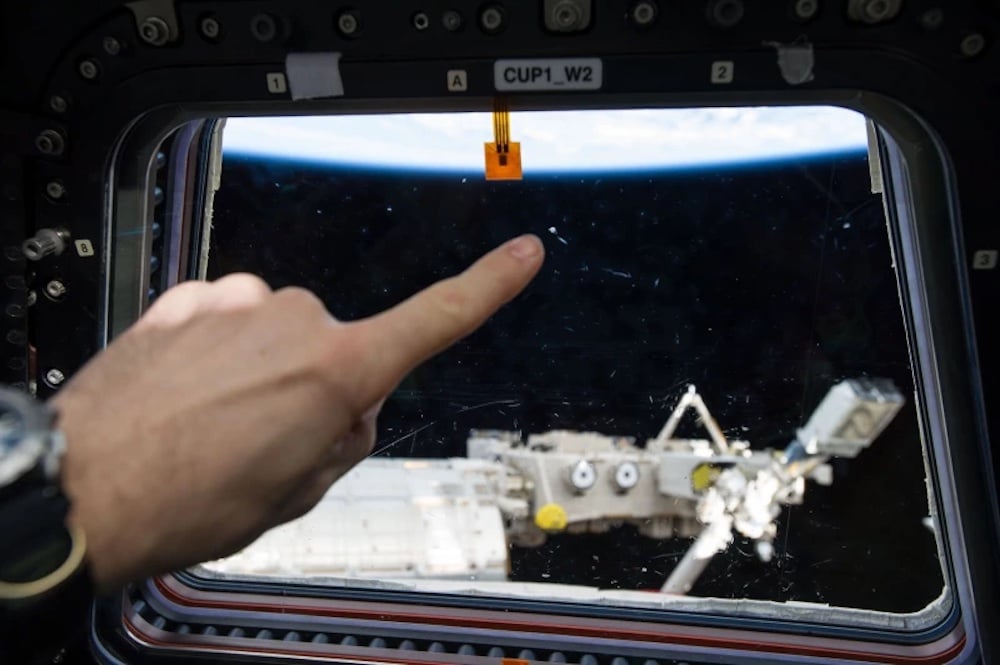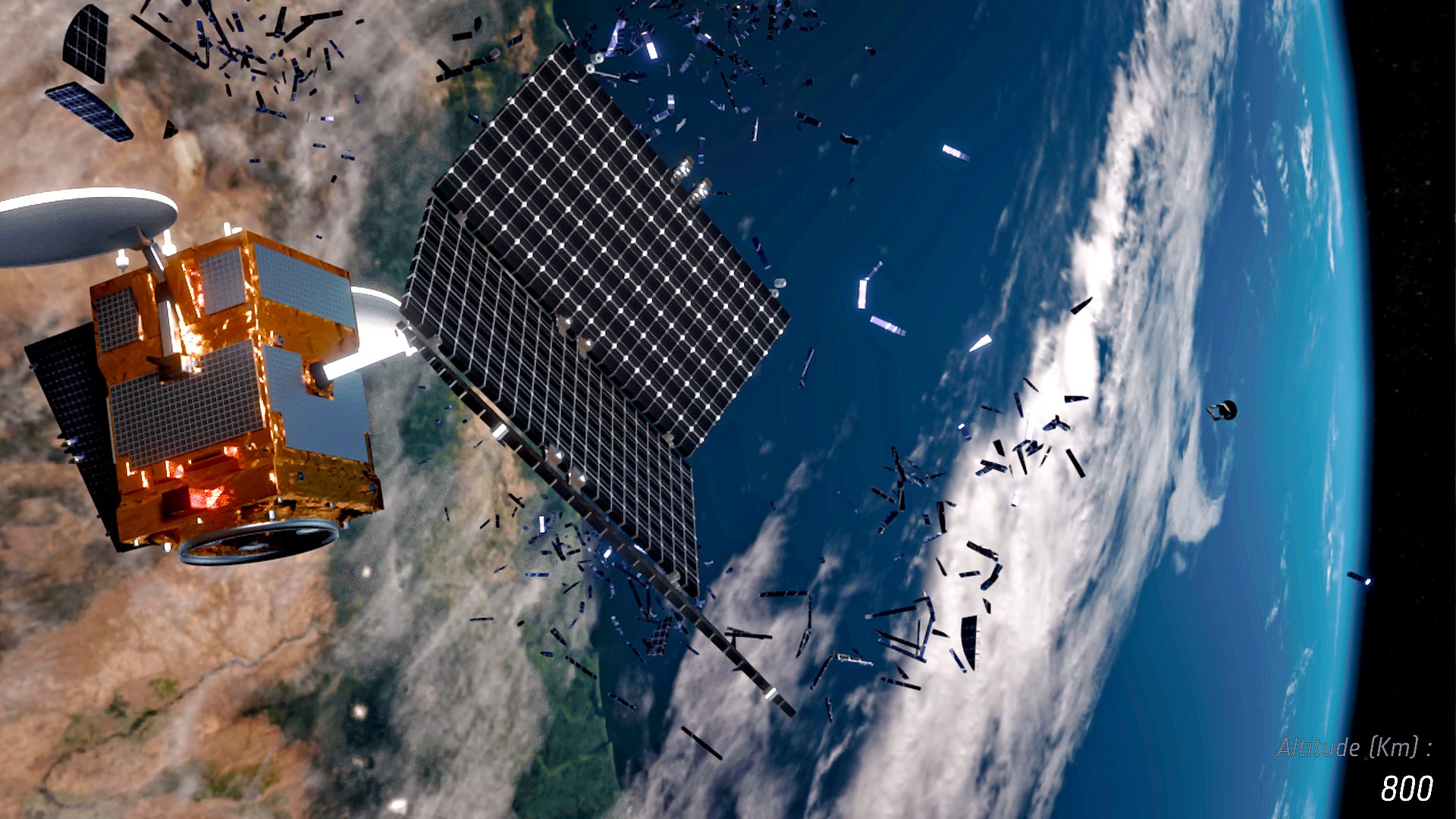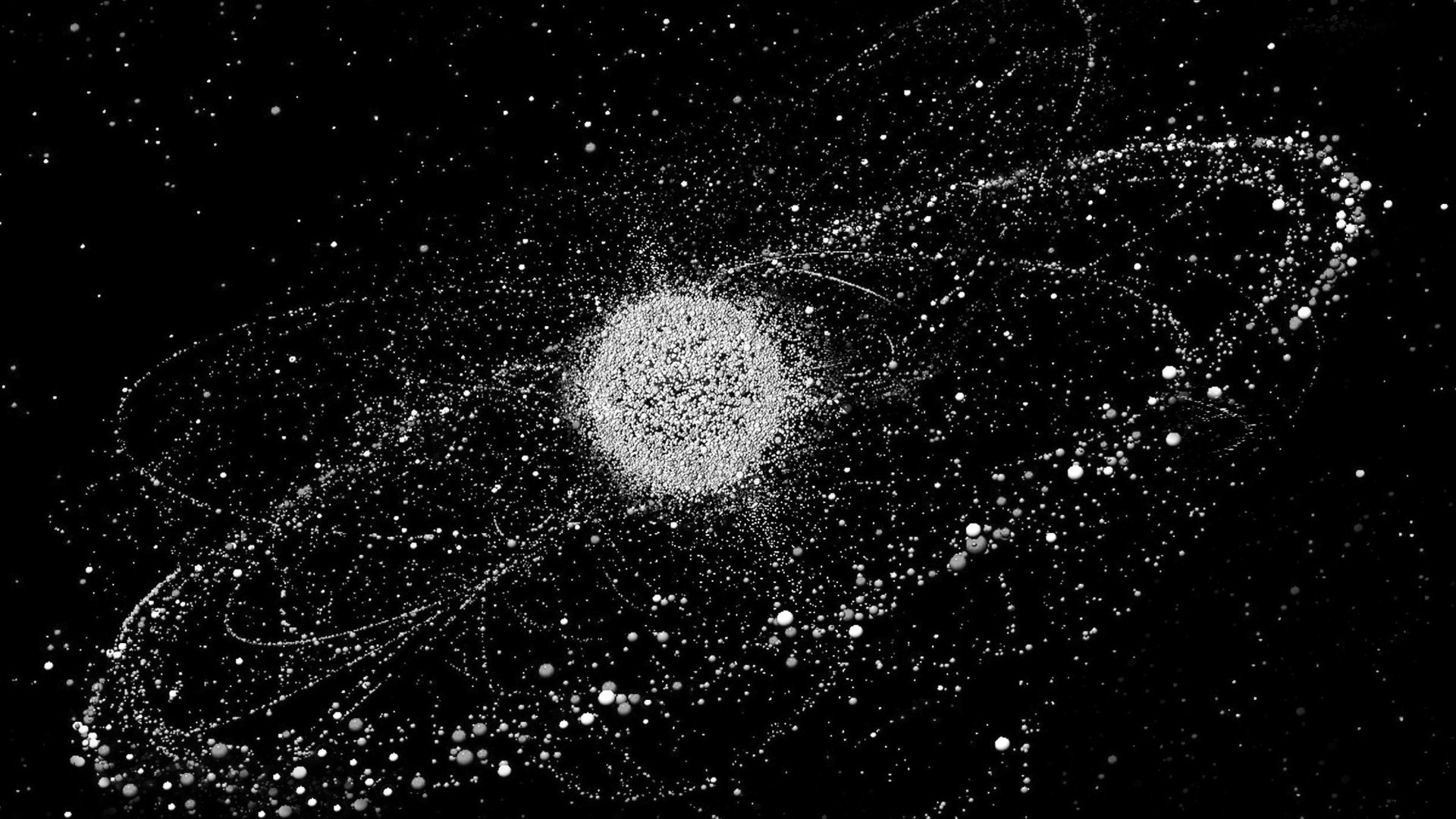Tens of thousands of pieces of space debris are hurtling around Earth right now. These defunct satellites, spent rocket stages, collision fragments and even a toolbox threaten active spacecraft and could trigger cascading disasters that make space unusable for generations. Since removing just a single piece of debris can cost tens of millions of dollars, the critical question becomes which ones should we prioritise?
It was during a spacewalk around the ISS that astronauts dropped a toolbox that now poses a threat to future space travellers. (Credit : NASA)
The numbers tell a sobering story. NASA data shows the monthly count of objects in Earth’s orbit continues to climb relentlessly, while computer simulations predict an alarming future. Without intervention, low Earth orbit could become so cluttered with debris that catastrophic collisions become routine, potentially triggering a runaway chain reaction known as Kessler Syndrome.
A few years ago, eleven international teams of space experts tackled this challenge by each creating a ranked list of the 50 most concerning objects in low Earth orbit. Although they used different approaches, 20-40% of the objects ended up on several experts’ lists, showing remarkable consensus given the complexity of the problem. However, their lists didn’t perfectly match. Now, researchers from France and Spain have applied social choice theory, the mathematical study of voting and collective decision making to this conundrum, revealing how different ways of combining expert opinions lead to dramatically different conclusions about our most urgent space threats.
International space agencies agree that simply preventing new debris isn’t enough. To stabilise the space environment, experts estimate we need to actively remove five to ten large pieces of debris, each bigger than 10 centimetres, every year before they fragment into thousands of smaller, untrackable pieces.
 Orbital Debris strike on one of the window’s within the International Space Station. (Credit : NASA)
Orbital Debris strike on one of the window’s within the International Space Station. (Credit : NASA)
Thankfully, the technology for space cleanup missions is rapidly advancing, with the first operational tests scheduled for later in 2025 and 2026. But with removal costs in the tens of millions of dollars per object, choosing the right targets is crucial.
The eleven expert teams used sophisticated methods to evaluate space debris, considering factors like mass, collision probability, orbital lifetime, and proximity to operational satellites. Despite using different approaches, they showed remarkable agreement with 20-40% of objects appeared on multiple lists. Only one object appeared on every expert’s list, while their collective work identified 273 different pieces of concerning debris across all lists.
This level of consensus is quite impressive given the complexity of weighing multiple risk factors. However, the remaining disagreements still matter significantly when deciding where to spend tens of millions of dollars on removal missions.
 Illustration of a satellite breaking up into multiple pieces at higher altitudes. (Credit : ESA)
Illustration of a satellite breaking up into multiple pieces at higher altitudes. (Credit : ESA)
The original study combined the expert opinions using a hybrid scoring method, multiplying each object’s Borda score (based on its ranking positions) by the number of lists it appeared on. This approach identified object 22,566 as the most concerning piece of debris.
However, the new research demonstrates that this conclusion depends entirely on the aggregation method chosen. Using the classic Borda count alone, object 22,220 emerges as the top priority. Apply the Condorcet winner principle, which seeks the object that would beat all others in head to head comparisons, and object 27,006 takes the lead. These aren’t minor technical differences though. Each method reflects different philosophical approaches to collective decision making, with real implications for where humanity spends its limited space cleanup resources.
The researchers argue for fundamental changes in how we approach space debris prioritisation. Rather than forcing experts to rank exactly 50 objects, they suggest allowing each team to identify however many objects they consider truly concerning. This acknowledges that the threshold for “concerning” debris shouldn’t be artificially constrained by committee decisions.
They also propose moving from ranked ballots to evaluative voting, where experts would categorise debris as “extremely hazardous,” “hazardous,” or “acceptable risk” based on absolute criteria rather than relative comparisons. This approach would be more robust to changes in the candidate pool and better reflect how experts actually think about risk assessment.
This research illuminates a broader challenge in scientific decision making, how to fairly aggregate expert opinions when stakes are high and resources are limited. The space debris problem resembles other collective choices, from pandemic response priorities to climate change mitigation strategies, where multiple valid perspectives must be reconciled into policies.
The study also reveals a critical gap in current debris removal planning, the failure to account for removal costs and dynamic effects. When one piece of debris is removed, the risk profiles of remaining objects change, suggesting we need more sophisticated approaches that consider removal sequences rather than individual targets.
As private space companies launch thousands of new satellites and space tourism takes off (if you will pardon the pun,) the orbital environment will only become more crowded. The methods we develop today for democratically choosing which space junk to remove, combining expert knowledge with fair aggregation techniques, may determine whether future generations inherit accessible space or a debris filled orbital wasteland that takes centuries to clear.
Source : These are the Most Concerning Pieces of Space Debris
